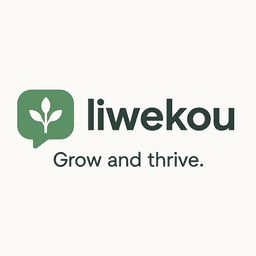Introduction
Daily productivity routines for remote work and deep work sessions are not one-size-fits-all rituals; they are a set of deliberate habits that shape how you start the day, allocate attention, and close work so focus compounds over time. In remote settings, blurred boundaries and constant connectivity make it harder to enter sustained focus states. This article outlines a practical flow from morning priming to structuring your day, executing deep work, managing collaboration and interruptions, and reviewing performance. Each section builds on the previous so you can create a repeatable system that increases focused hours, improves output quality, and preserves long-term energy. Read on for actionable routines, a sample daily template, and measurement ideas to adapt the system to your rhythm.
Morning ritual to prime focus
An intentional start creates the conditions for sustained attention later. Your morning ritual should be short, repeatable, and designed to move you from reactive mode into planning and high-energy readiness.
- Wake with consistency: keep a stable wake time to regulate sleep and cognitive energy.
- Activate body and mind: 10–20 minutes of light exercise, hydration, and a simple breathing or grounding practice reduces morning fog.
- Clarify priorities: pick 1–3 Most Important Tasks (MITs) for the day and time-block the one that requires deepest focus.
- Protect the first hour: avoid email and Slack until after your first deep session; use this time to tackle the top MIT.
These habits reduce decision fatigue and create a predictable trigger that signals the brain: it is time to work deeply.
Structure your workday with time blocks
Time blocking transforms vague intentions into scheduled actions. Build a day that aligns with your energy peaks and team requirements, balancing deep work, shallow work, and collaboration windows.
- Map your energy: note when you feel most alert and reserve those periods for deep tasks.
- Core deep blocks: schedule at least one 60–120 minute deep block in the morning and one shorter block in the afternoon if needed.
- Batch shallow tasks: group meetings, email, and admin into 1–2 blocks to minimize context switching.
- Reserve collaboration windows: set predictable windows for synchronous calls so teammates know when you are available.
Below is a sample daily template you can adapt to your time zone and responsibilities.
| Time | Activity | Purpose | Focus type | Target metric |
|---|---|---|---|---|
| 07:00–08:00 | Morning ritual + plan | Prime energy, choose MITs | Preparation | 3 MITs identified |
| 08:00–10:00 | Deep work block A | High-value solo work | Deep | 1 MIT completed / 90 min focused |
| 10:00–10:30 | Break + quick admin | Recharge and triage | Shallow | Inbox cleared to 20 |
| 10:30–12:00 | Collaborative work / meetings | Team alignment | Synchronous | Decisions logged |
| 13:00–14:30 | Deep work block B | Project progress | Deep | Draft / code / analysis progressed |
| 15:00–17:00 | Shallow tasks + wrap up | Email, tickets, handoffs | Shallow | Daily summary sent |
Design deep work sessions that stick
Deep work requires more than blocking time; it needs setup, rules, and transition rituals. Treat each session like a mini-experiment to optimize duration and environment.
- Set a clear outcome: begin with a one-sentence goal for the session — what deliverable or progress looks like.
- Use a pre-work ritual: a cup of tea, turning off notifications, putting on headphones, and a 60-second focus breath creates cognitive cues.
- Choose session length: try 90-minute cycles for creative or complex tasks, and 50–60 minutes for sustained coding or review.
- Time-box and track: use a timer and record distraction events; aim to reduce interruptions week over week.
- End with a transition: five minutes of notes on progress and next steps makes it easier to resume later and reduces mental residue.
Manage distractions and collaborate intentionally
Remote work complicates focus: messages arrive continuously, and collaboration can interrupt deep focus. Use signals, rules, and tooling to protect attention while staying responsive.
- Signal status: use calendar blocks and status messages like “Deep focus 08:00–10:00 — async replies after 10:30”.
- Limit notifications: mute non-critical apps during deep blocks and allow only urgent channels to bypass.
- Establish team norms: agree on expected response times for messages and preferred channels for urgent vs non-urgent communication.
- Schedule collaboration wisely: cluster meetings to reduce fragmentation and keep at most one meeting-heavy afternoon a week.
- Use async tools: recorded updates, shared docs, and clear agendas reduce the need for synchronous meetings.
These practices protect deep work while keeping remote teams aligned and respectful of focused time.
Review, measure, and iterate
Routines are hypotheses. Regular review turns them into improvements. Track simple metrics and run short experiments to refine what works.
- Daily quick review: end-day 5-minute reflection: what went well, what blocked me, and plan for tomorrow.
- Weekly metrics: measure deep hours, MITs completed, number of context switches, and subjective focus score (1–5).
- Experiment in sprints: try a new session length, a different time block, or a notification setup for two weeks and compare results.
- Document guidelines: capture team norms and personal rituals so you can onboard new teammates or re-establish the routine after changes.
When review highlights recurring friction, adjust one variable at a time to understand cause and effect. Over weeks, small gains compound into significantly higher-quality output.
Conclusion
Creating daily productivity routines for remote work and deep work sessions is about sequencing habits so energy, schedule, environment, and team norms all support focus. Start with a concise morning ritual that clarifies priorities, then structure the day into time blocks that place deep work at your peak energy. Design deep sessions with clear outcomes, setup rituals, and transition steps, and protect them using notification rules and agreed collaboration windows. Finally, review simple metrics and run short experiments to refine the system. Implementing these linked practices will increase uninterrupted focus, reduce context switching, and make remote collaboration smoother. Begin small, measure consistently, and iterate until the routine fits your rhythm and goals.
Image by: Mizuno K
https://www.pexels.com/@mizunokozuki



